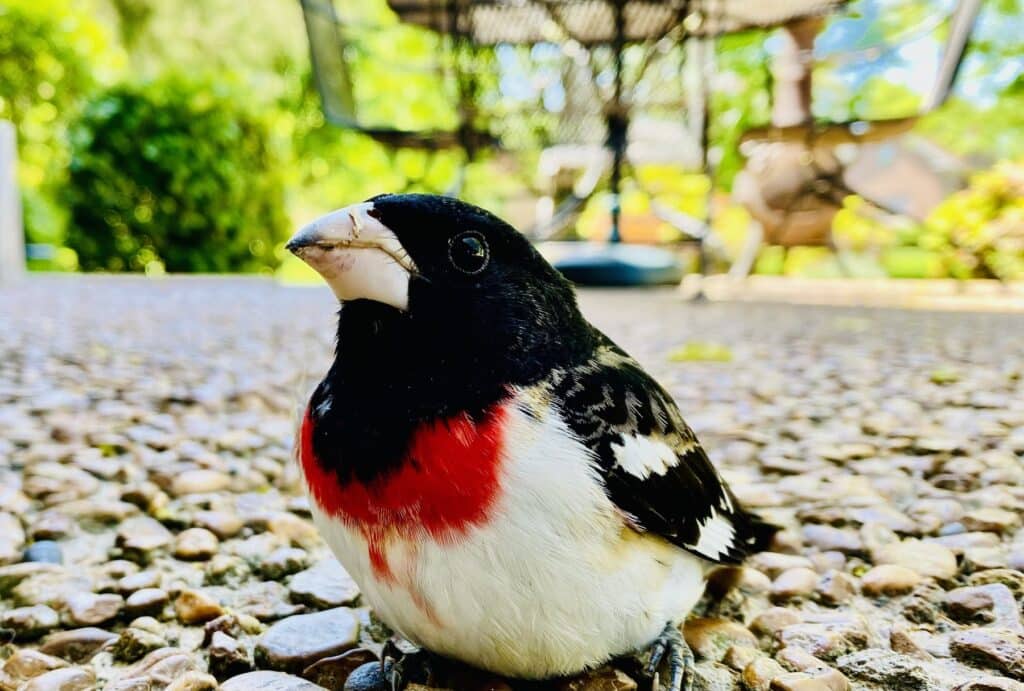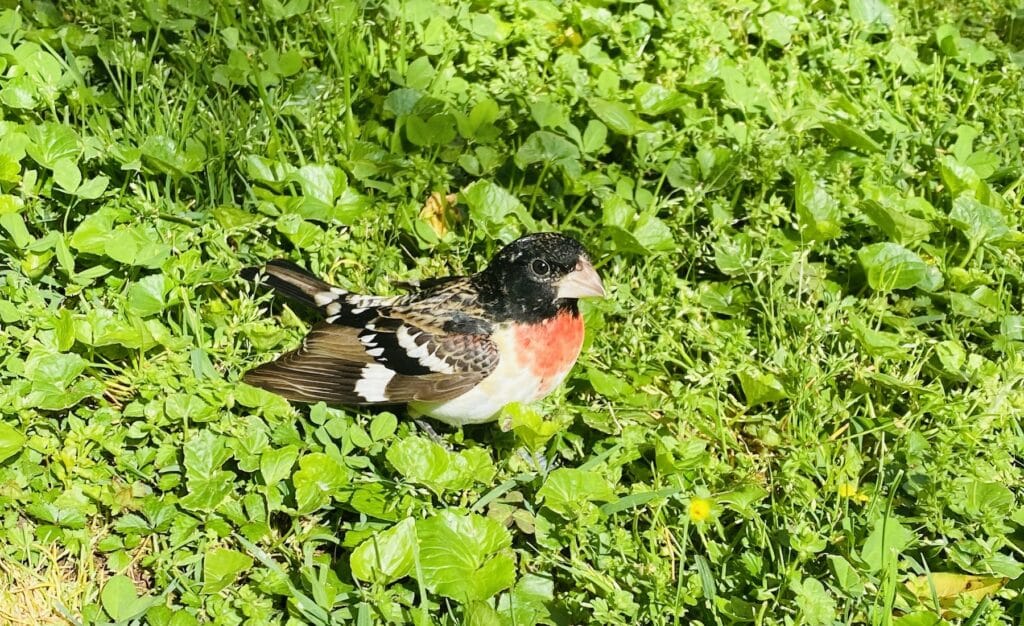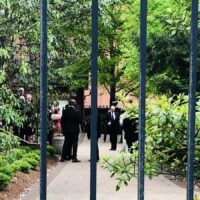I didn’t know it then, but a magnificent visitor was on the way to my house around this time three years ago. We were in the early part of the pandemic lockdown, and I had converted my kitchen into a one-reporter newsroom for the fledging Hoptown Chronicle.
I reported and wrote from home with my golden retriever Summer as company while my husband worked at one of the essential businesses in town that could remain open.
Many of my interviews were over the phone. Occasionally I headed out to shoot photos or speak with someone from a safe distance. But I spent most of my time at the kitchen table with a big view of the backyard through a glass door.
Spring felt different that year. The sky, the grass, the blooms seemed brighter. The virus wasn’t after them. We were the ones potentially in harm’s way.
I wondered if the sudden decrease in road traffic had made the outdoors more vibrant. Even the birds sounded louder and more cheerful, as if finally they had our attention.
That’s when I saw the visitor — a chunky bird with black and white feathers on his head and wings, and a little red vest on top of his white chest.

He was grand. Then I saw another one. And another. And another. It was hard to keep track. They darted among the robins and blue jays (and the squirrels) that knew my husband kept the feeders full of black sunflower seeds and other morsels.
Who was the stranger? I searched online and found him. A male rose-breasted grosbeak.
- SUBSCRIBE: Sign up for our newsletters
For a while, I thought that the grosbeaks had never been here before. I thought I was onto something. Had nature shifted because people were mostly at home doing homebody things, like baking bread, teaching their children to read, learning to knit, making fancy cocktails, watching old sitcoms — and my personal favorite, writing real letters to family and friends near and far. (Also, I might have lost my head for a couple of weeks and made no telling how many chocolate pies and skillets of cornbread that I left for friends on porches around town. You can do that when your desk is two feet from the oven.)
In a nutshell, I wondered if less hustle and bustle, not to mention less vehicle exhaust hanging in the air, had somehow given the birds the spirit to roam more ambitiously on their migration back to the North. (As I said, I must have lost my head.)
I was dead wrong. The rose-breasted grosbeak had been there every spring. Likely in my backyard. I just wasn’t giving them any attention.
They are so dandy, like a smart dresser in a tailored suit and red necktie. I can’t believe I never noticed them.

But we have a thing now. I know (hope) the grosbeaks are coming back every spring, the black, white and red males and the brown and yellow females. It’s usually around the last week of April. They stay a few weeks, maybe a little more than a month, and then they are gone, leaving the yard to the year-round gang of robins, blue jays, cardinals and woodpeckers.
My friend Rachel, who lives in the little town of Freeville, New York, also admires rose-breasted grosbeaks. They travel great distances.
I learned from the website of Cornell Lab of Ornithology at Cornell University in Ithaca, New York, that rose-breasted grosbeaks fly all the way from North American breeding grounds to their winter places in Central and northern South America.
“Most of them fly across the Gulf of Mexico in a single night, although some migrate over land around the Gulf,” the Cornell Lab website describes. “Grosbeaks that winter in Panama and northern South America tend to be from eastern parts of the breeding range, while those wintering in Mexico and Central America tend to be from western parts.”
Kentucky is part of their migration territory. New York is part of their breeding territory. This map shows their vast domain. Here’s more about grosbeaks, including the fact that they are monogamous.
If you haven’t seen a rose-breasted grosbeak, you might have heard one like this.
“Both males and females sing a rich, sweetly whistled song,” the Cornell Lab states. “The pattern is similar to an American Robin’s song, composed of many notes that alternately rise and fall. Most people describe the grosbeak’s song as sweeter and more melodious than a robin’s. The song can last 6 seconds and consist of 20 notes or syllables.”
I believe the grosbeaks will arrive at my house in about 10 days. They are a hopeful sign. And a reminder to pay attention to what’s out there in my own backyard.
Jennifer P. Brown is co-founder, publisher and editor of Hoptown Chronicle. You can reach her at editor@hoptownchronicle.org. Brown was a reporter and editor at the Kentucky New Era, where she worked for 30 years. She is a co-chair of the national advisory board to the Institute for Rural Journalism and Community Issues, governing board past president for the Kentucky Historical Society, and co-founder of the Kentucky Open Government Coalition. She serves on the Hopkinsville History Foundation's board.





